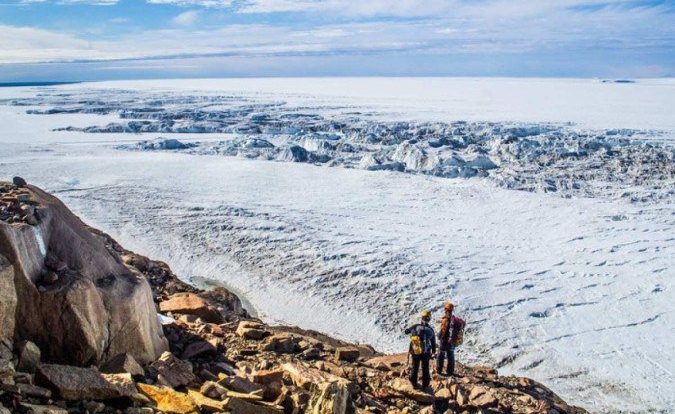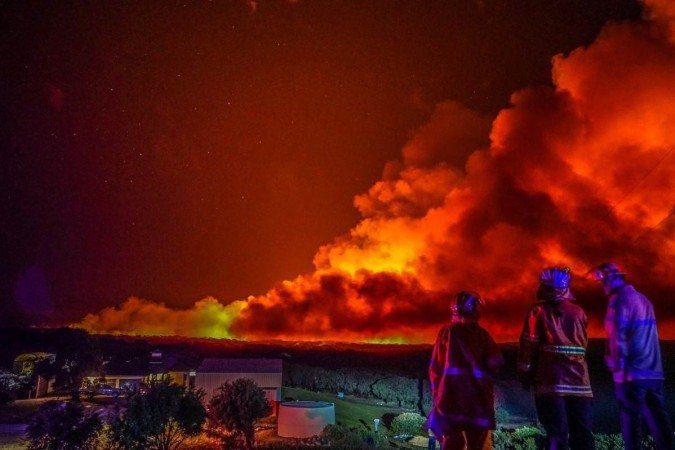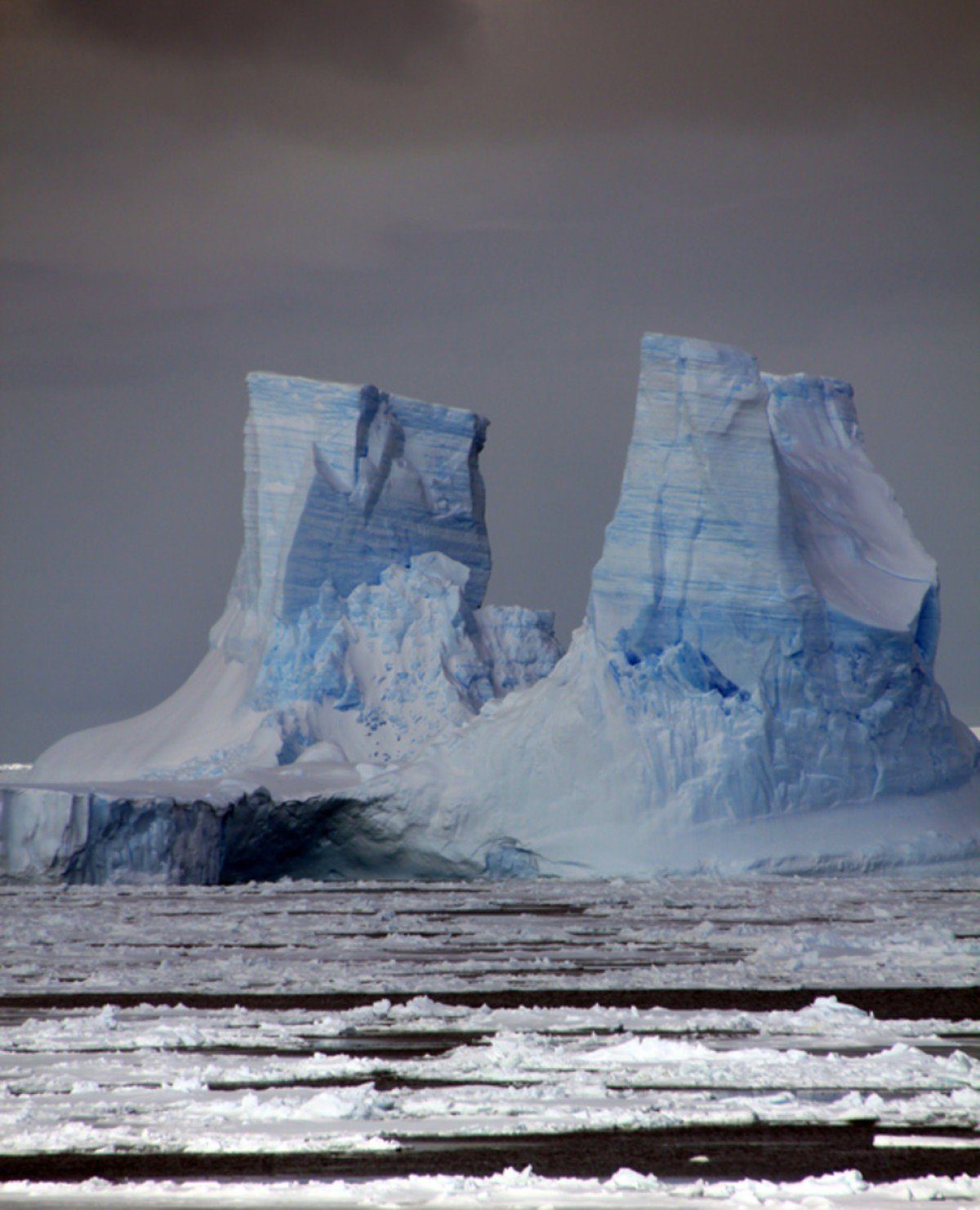
Published on 11/08/2022 06:00

(Credit: Richard Jones/Disclosure)
In the far south of the planet is a sleeping ice giant. It’s been this way for the past millennia, and until recently, it was thought that nothing would wake you up. However, scientists discovered that he wakes up. Global warming has begun to awaken the largest ice cap on the planet. If nothing is done to prevent the temperature rise from exceeding 2 degrees Celsius, as defined by the Paris Agreement, 52 meters of freezing water could melt. The global consequences would be catastrophic.
A study published yesterday in Nature confirms what has already been observed in 2020: The East Antarctic Ice Sheet (Eais), in the eastern part of the frozen continent, is more disrupted than previously thought. Now, though, researchers have calculated how the melt will affect sea-level rise, a problem already underway due to the melting of other glaciers. By 2300, the dismantling of the giant will cause it to increase in size between 1.5 meters and 3 meters in the oceans. The situation in 2500 will be worse: 5 million more. Among other consequences, islands and countries will be swallowed whole.
Eais makes up 80% of all the ice on the planet. “It’s so large that in some parts it is up to 4 kilometres,” says Chris Stokes, a professor at the University of Durham in the UK and lead author of the study. Theoretically, if the mantle melted overnight, the sea would be 52 meters deep. “Of course, that won’t happen,” Stokes explains. But the continued melting caused by rising temperatures will add more water than the coasts of the continents can handle.
“We were interested in how stable the Eais is because, for a long time, scientists thought that, compared to West Antarctica and Greenland, there would be more stability. So we probably wouldn’t have to worry so much about it in a warming scenario.”, says the researcher. “But in the study, we looked at times in the past when the weather was a little warmer than it is now, and we saw the reaction of the Eais. We found that it regressed, and in some cases this regression was dramatic, contributing to the sea level increase from 5m to 10m. “.
(Photo: Nereli Abram/Disclosure)
Instability
The lesson from the past, Stokes says, is that the ice sheet is not as stable as thought. In addition, the researchers analyzed satellite observations that proved: in recent decades, there has been a significant decrease in ice cover. “We have here some worrying signs because while most of the ice sheet appears stable, some parts are shrinking and shrinking, contributing to sea level rise such as West Antarctica and Greenland.” Therefore, even if only some parts of the Eais turned into water, this would be enough to add volume to the oceans.
According to Stokes, one of the most important conclusions of the study is that the fate of the ice giant has not yet been determined. Computer simulations have shown that in scenarios of lower greenhouse gas emissions, which lead to warming, the Eais region is likely to remain intact. For this, it is necessary to achieve the goals set in the Paris Agreement in 2015: limit warming to 2°C, preferably 1.5°C, by the end of the century, based on pre-industrial levels.
The problem is that, according to the World Meteorological Organization, a United Nations body, the current pace of emissions indicates an increase scenario of between 2.5°C and 3°C. Since the beginning of industrialization, the world has been 1.1°C warmer, according to the Intergovernmental Panel on Climate Change (IPCC). “Achieving and strengthening our commitments to the Paris Agreement will not only protect the world’s largest ice sheet, but also slow the melting of other major ice sheets, such as Greenland and West Antarctica, which are more vulnerable to global warming.” , in a note, Nerelli Abram, of the National Antarctic University in Canberra (Australia) and co-author of the article.
minimal effect
The East Antarctic Ice Sheet is the largest ice mass on Earth, containing more than 50 meters above sea level. Most scientists expected and assumed it was stable. This study carefully analyzes how Eais behaved in past warm periods and shows what models say will happen in the future. The good news is that if we maintain the two degrees Celsius of global warming promised by the Paris Agreement, sea level rise due to (melting) the ice sheet in East Antarctica should be modest. However, if greenhouse gas emissions are not controlled, there is a risk that the extremely cold Eais will begin to recede and could contribute to a sea level rise of several meters in the coming centuries. The study emphasizes that keeping emissions under control now can prevent catastrophic sea level rise for future generations.”
Eric Wolf, a climate researcher at the University of Cambridge, UK
Focus on complex extreme events

Credit: Shaun Bloxedge/Western Australian Department of Fire and Emergency Services/AFP
The simultaneous events of extreme heat and drought can have side effects in a variety of areas, from health to economics, researchers at the University of Zurich in Switzerland said. In an article published in the journal PLOS, scientists evaluated the combination of phenomena such as rising temperatures, water shortages and wildfires in Europe, Australia and Africa, which have occurred in the past 20 years, and say that in addition to their intensification. Efforts and investments to adapt to this new reality, cross-sectoral cooperation and, increasingly, global cooperation will be essential.
The researchers analyzed eight extreme hot and dry events on three continents. In addition to studying the direct and indirect consequences of various sectors and systems, they studied the effect of responses to phenomena. “Financial losses, for example, can be significant,” says Laura Nigley, first author of the study. In the 2019/2020 Australian bushfires, losses were around A$100 billion, which is equivalent to more than 5% of Australia’s GDP.
The researchers argue that, in the future, risk assessment should not take into account the consequences of extreme events in individual sectors, but should take account of interdependence systematically. “This is particularly important as we are likely to see unprecedented extreme events combined with cascading effects that transcend all historical cases. These effects must be carefully analyzed to support the design of adaptive and reactive measures,” says Professor of Geography at Christian Huegel University who led the study.

“Friendly zombie guru. Avid pop culture scholar. Freelance travel geek. Wannabe troublemaker. Coffee specialist.”







